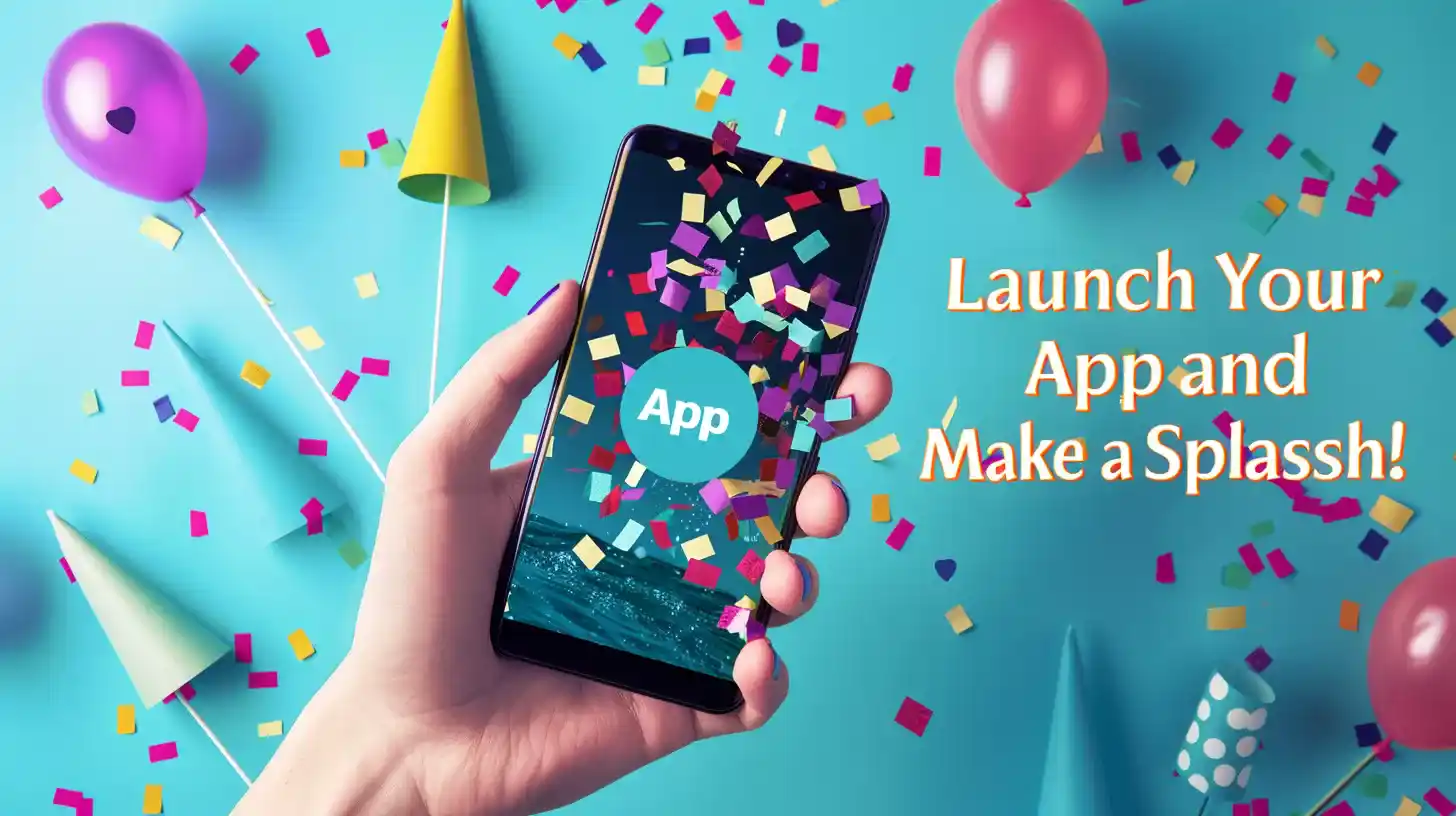Table of Contents
Ever dreamt of turning your ingenious app idea into a reality? You’re not alone. Millions of people worldwide have fantastic concepts for mobile applications, but the process of how to create an app can seem daunting. Fear not, aspiring app developer!
This comprehensive guide will walk you through every step of how to create an app, from brainstorming your concept to launching it to the world.
Understanding the Market
Before diving headfirst into development, it’s crucial to understand the market landscape. Conducting thorough research is a vital step in how to create an app. By understanding the existing apps in your niche, you can position your app for success. Here’s how market research can benefit your app creation journey:
- Identifying Gaps: Carefully analyze existing apps. Are there any features missing? Can you offer a more streamlined user experience? Identifying these gaps will help you refine your app’s unique selling proposition (USP).
- Learning from the Best: Don’t reinvent the wheel! Analyze what successful apps in your niche are doing well. What kind of design elements do they use? How do they engage users? By learning from their successes, you can incorporate best practices into your app.
Defining App Objectives
Now that you have a clear understanding of the market, it’s time to define your app’s core objectives. What issue are you attempting to address for users? What value will your app bring to their lives?

Here are some questions to consider:
- Who is my target audience? Defining your ideal user will help you tailor the app’s features and user interface to their specific needs and preferences.
- What specific need am I addressing? Be clear and concise about the problem your app solves.
- What are the key functionalities of my app? List down the essential features that make your app unique and valuable.
Choosing the Right Development Platform: Coding vs. No-Code
Selecting the most suitable development platform is a crucial step when you want to create an app for your business. Here’s a breakdown of your two main options, each with its advantages and considerations:
- Coding-Based Development:
This approach offers maximum flexibility and customization in how to create an app. You can tailor the app to your exact specifications and have complete control over every aspect of its functionality. However, it requires programming knowledge in languages like Java (Android) or Swift (iOS). If you’re a seasoned programmer, this path might be ideal. But for those without coding experience, it can present a significant hurdle.

- No-Code App Builders:
No-code app builders offer a fantastic alternative for those who want to create an app without writing a single line of code. These platforms utilize drag-and-drop interfaces and pre-built components, allowing you to visually design and build your app. While no-code platforms may offer less customization compared to coding, they are a great option for beginners or those with limited technical expertise.
So, how to create an app and choose the right development platform? Here are some factors to consider on how to create an app:
- Your technical skills: If you’re comfortable with coding, the flexibility of coding-based development might be appealing. However, if you’re new to app development, a no-code platform offers a more accessible entry point.
- App complexity: For complex apps with intricate functionalities, coding-based development might be necessary. However, for simpler apps, no-code platforms can be surprisingly powerful.
- Budget: Hiring a developer for coding-based development can be expensive. No-code platforms often have more affordable subscription plans.
Ultimately, the best development platform depends on your specific needs and skillset. Carefully evaluate your options to determine the most suitable approach for how to create an app that meets your vision.
Related Article: How to Start Mobile App Software Development
Planning App Features: Prioritization and User Flow in How to Create an App
Now that you have a clear idea of your app’s purpose and target audience, it’s time to meticulously plan the features that will bring your vision to life. This stage is crucial in how to create an app because it sets the foundation for a user-friendly and successful app. Here’s a breakdown of the key points to consider:
- Prioritize Ruthlessly: Imagine a user opening your app for the first time. What are the absolute essentials they need to accomplish their goal or experience the core value of your app? Focus on including these critical features first. It’s tempting to add every bell and whistle you can think of, but resist the urge! Too many features in the initial version of your app can overwhelm users and hinder the overall user experience.
Here’s an analogy: Think of your app like a delicious sandwich. The core functionalities are the bread – they provide the foundation for everything else. You can always add more toppings (fancy features) later on, but without the bread, the sandwich falls apart!
- Organize for User Flow: Once you’ve identified the essential features of your app, it’s time to consider how users will navigate through them. How to create an app requires planning the user journey. Imagine the journey users will take when using your app. How will they get from point A (opening the app) to point B (completing their desired task)?
Here’s a tip: Sketch out a user flow diagram. This is a visual representation of the steps a user will take to achieve a specific goal within your app. By planning the user flow in how to create an app, you can ensure a smooth and intuitive experience where users can find what they need quickly and easily.
For example, if you’re developing a food delivery app, the user flow might involve browsing restaurants, selecting dishes, adding them to a cart, placing an order, and tracking the delivery. Optimizing this user flow will make the food ordering process a breeze for your app’s users.
By following these tips, you can plan your app’s features strategically, ensuring a user-friendly and successful launch. Remember, you can always introduce additional features later based on user feedback and market trends as you continue to learn about how to create an app.
Designing the User Interface
A user-friendly and visually appealing interface is paramount for any successful app. Here are some design considerations:
- The key is simplicity: Make sure the interface is neat and organized. Users should be able to understand how to use your app intuitively.
- Visual appeal matters: Invest in creating a visually appealing design that aligns with your brand identity. This will make your app more engaging for users.
Developing the App
This is where the magic of how to create an app truly comes alive! Here, your meticulously crafted design transforms from a blueprint to a functional app. The development process can be approached in two main ways, depending on your technical expertise:
- Choose the Right Tools:
- iOS Development: Use Xcode and Swift.
- Android Development: Use Android Studio and Kotlin.
- Cross-Platform Development: Use frameworks like React Native or Flutter.
- Hire a Development Team:
- Ensure the team has the necessary skills and experience.
- Provide them with the specification document and design assets.
- Development Process:
- Follow agile methodologies for iterative development.
- Regularly test and review progress to ensure quality.
Development is the most technical part of the process, requiring attention to detail and expertise.
Testing and Quality Assurance
Before launching your app, rigorous testing is crucial. Here’s what you need to do:
- Test on multiple devices: Ensure your app functions flawlessly across different devices and operating systems.
- Identify and fix bugs: Meticulously test all functionalities of your app to identify and resolve any bugs that may hinder user experience.

Launching and Marketing the App
Congratulations! You’ve created your app! Now it’s time to launch it on the app stores (Google Play Store or Apple App Store). Additionally, consider these marketing strategies:
- App store optimization (ASO): Optimize your app listing with relevant keywords to increase your app’s discoverability in search results. Conduct keyword research to identify terms users are likely to search for when looking for apps like yours. Include these keywords in your app title, description, and screenshots.
- Create a compelling app store listing: Don’t underestimate the power of a well-crafted app store listing. Write a concise description highlighting your app’s unique features and benefits. Include high-quality screenshots and a captivating video preview to showcase your app in action.
- Leverage social media: Promote your app launch across your social media channels. Generate buzz by creating engaging content that piques user interest. Reach your perfect audience by running specific social media advertisements. You can also use SMM panel for more efficient and streamlined social media management.
- Consider influencer marketing: Partner with relevant influencers in your niche to promote your app to their audience. This can be a great way to gain credibility and reach a wider user base.
Conclusion
Launching your app is a significant accomplishment, but it’s just the beginning of the journey. Here are some closing thoughts on how to create an app:
- Gather user feedback: Actively solicit input from your users. Pay close attention to reviews and ratings to identify areas for improvement.
- Continuously update and improve: The mobile app landscape is constantly evolving. Regularly update your app with new features and bug fixes to keep users engaged.
Following these steps and remaining dedicated to continuous improvement can turn your app idea into a thriving success story. Now, go forth and create something amazing!